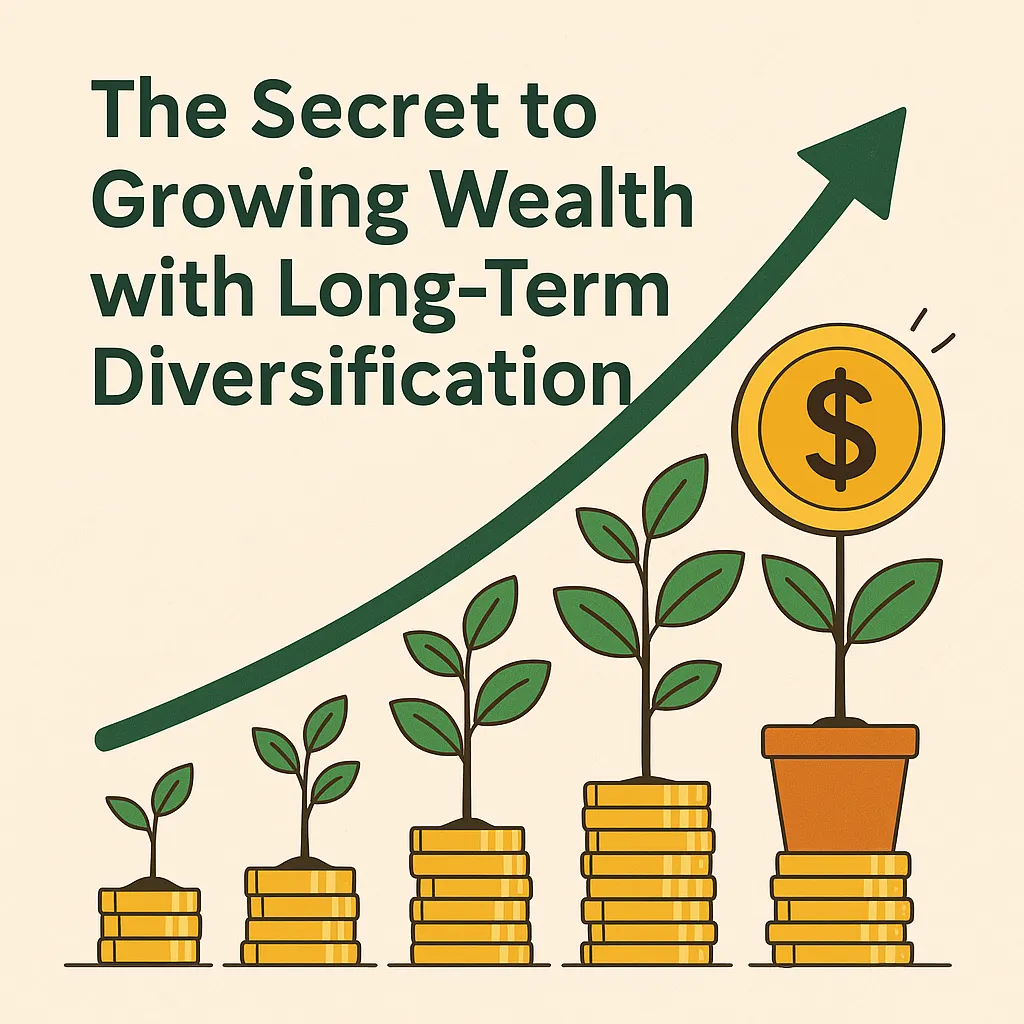The Secret to Growing Wealth with Long-Term Diversification

In today's fast-paced financial landscape, the quest for growing wealth often feels like navigating a maze. With the rise of market volatility and economic uncertainty, many investors find themselves chasing quick returns that promise much but deliver little. Enter the transformative power of long-term diversification — a strategy that not only mitigates risk but also paves the way for sustainable wealth accumulation. By spreading investments across various asset classes, regions, and sectors, you can unlock the secret to financial growth that withstands the test of time. This article delves into how long-term diversification can be your key to financial prosperity, offering insights and strategies to help you harness its potential.
Understanding the Power of Diversification
Diversification is the financial equivalent of not putting all your eggs in one basket. By investing in a mix of assets, you reduce the risk of a single investment negatively impacting your overall portfolio. According to a study by Vanguard, diversified portfolios tend to perform better over time compared to those heavily weighted in a single asset class.
Diversification works because different investments react differently to the same economic event. For instance, while stocks might dip during a recession, bonds might hold steady or even appreciate. This balance can help stabilize your returns, providing a smoother investment journey.
The Long-Term Advantage
While diversification is beneficial in the short term, its true power unfolds over the long haul. Investing with a long-term perspective allows you to ride out market fluctuations and capitalize on the growth potential of your diversified portfolio. A famous quote by Warren Buffett encapsulates this idea:
“The stock market is designed to transfer money from the Active to the Patient.”
By remaining patient and committed to a diversified strategy, you position yourself to benefit from compound growth—a phenomenon where your investment returns generate their own returns over time, exponentially increasing your wealth.
Building a Diversified Portfolio
To effectively diversify, consider spreading your investments across the following asset classes:
- Stocks: Represent ownership in a company and offer growth potential.
- Bonds: Fixed-income securities that provide stability and income.
- Real Estate: Tangible assets that can offer income and appreciation.
- Commodities: Physical goods like gold and oil that can hedge against inflation.
- International Investments: Exposure to global markets that can reduce domestic economic risk.
Each asset class behaves differently under varying economic conditions. For example, stocks may perform well during economic expansions, while bonds could serve as a safe haven during downturns. This mix can help smooth out returns and reduce portfolio volatility.
Geographic and Sector Diversification
Beyond asset classes, geographic and sector diversification are crucial. Investing in international markets can protect against domestic economic downturns, while sector diversification ensures you're not overly reliant on a single industry. A well-diversified portfolio might include technology stocks from the U.S., healthcare stocks from Europe, and emerging market bonds. This approach not only spreads risk but also taps into growth opportunities worldwide.
Real-World Examples and Case Studies
Consider the 2008 financial crisis: investors who held diversified portfolios across different asset classes and geographic regions generally fared better than those who were heavily invested in U.S. financial stocks. Similarly, during the tech boom of the late 1990s, those diversified into other sectors avoided the brunt of the tech bubble burst. These historical examples underscore the importance of staying diversified across multiple dimensions. It's about creating a safety net that allows you to weather financial storms and capitalize on growth when markets recover.
Common Pitfalls and How to Avoid Them
While diversification is a powerful strategy, it's not without its challenges. One common pitfall is over-diversification, where investors spread themselves too thin, diluting potential returns. Another is failing to rebalance, which can skew your asset allocation over time. To avoid these pitfalls, regularly review your portfolio and adjust as needed to maintain your desired level of diversification. This proactive approach ensures your investments align with your financial goals and risk tolerance.
Conclusion
The secret to growing wealth lies in embracing long-term diversification—a strategy that balances risk and reward, offering a path to sustainable financial growth. By investing across asset classes, regions, and sectors, you create a resilient portfolio poised to weather economic fluctuations. As you embark on your investment journey, remember that patience and persistence are your allies. Challenge yourself to remain committed to a diversified strategy, and you'll be well on your way to unlocking the wealth-building potential it holds. In the words of investment legend Peter Lynch, "The key to making money in stocks is not to get scared out of them." Let this wisdom guide you as you navigate the financial markets, one diversified step at a time.



